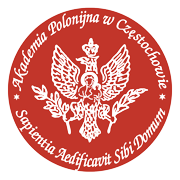SHOULDER MECHANICS AND INJURY RISK IN AERIAL ACROBATICS: FROM LOAD PATTERNS TO RECOVERY PATHWAYS
Abstract
The shoulder joint is the most mobile, but also the most vulnerable link in the biomechanical chain of the upper extremity, which is especially evident in conditions of increased load when performing aerial acrobatics elements. The article presents a holistic anatomical and biomechanical review of the structures of the shoulder complex and characterizes the main mechanisms of injury that occur during dynamic and static elements with support on the upper extremities. The typical range of peak loads for different grip variants (true, cup, twisted) and their relationship with the shoulder position are analyzed. Particular attention is paid to preventive strategies, in particular, eccentric strengthening of the shoulder rotators, stabilization of the scapula, and training load management. The second part offers a step-by-step four-phase model of rehabilitation after functional overload, with clear criteria for transitioning between phases. The final section outlines the prospects for research on anatomical, hormonal, and gender moderators of injury, with an emphasis on the need for standardization of methodology for meta-analytic reviews. Objective. To form an integrated resource covering the anatomy of a shoulder, functional biomechanics during training by aerial acrobatics, to develop coaching tips, and to study the epidemiology of injuries. Research methods. Narrative synthesis (PubMed, Scopus, Web of Science 2015 2025) in combination with the expert experience of the Chief International Judge of the IPSF.
References
2. Clarsen, B., Bahr, R., Andersson, S. H., Munk, R., & Myklebust, G. (2014). Reduced glenohumeral rotation, external rotation strength, and scapular control are risk factors for shoulder injury in elite handball players. British Journal of Sports Medicine, 48(17), 1327–1333. https://doi.org/10.1136/bjsports-2014-093702
3. Cools, A. M., Johansson, F. R., Borms, D., & Maenhout, A. (2015). Prevention of shoulder injuries in overhead athletes: A science-based approach. Brazilian Journal of Physical Therapy, 19(5), 331–339. https://doi.org/10.1590/bjpt-rbf.2014.0109
4. Edouard, P., Degache, F., Oullion, R., Plessis, J., & Calmels, P. (2013). Shoulder strength imbalances as injury risk in handball players: A prospective study. International Journal of Sports Medicine, 34(7), 654–660. https://doi.org/10.1055/s-0032-1329959
5. Kostrikova, K. (2025). Biomechanical and kinetic aspects of acrobatic elements in pole sport [Biomekhanichni ta kynetychni aspekty akrobatychnykh elementiv u pole sporti]. Visnyk Natsionalnoho universytetu "Chernihivskyi kolehium" imeni T. H. Shevchenka, (31 [187]), Seriia: Pedahohichni nauky, 46–51. https://doi.org/10.58407/visnik.253108
6. Kibler, W. B., Ludewig, P. M., McClure, P. W., Michener, L. A., Bak, K., & Sciascia, A. D. (2013). Clinical implications of scapular dyskinesis in shoulder injury: The 2013 consensus statement from the “Scapular Summit”. British Journal of Sports Medicine, 47(14), 877–885. https://doi.org/10.1136/bjsports-2013-092425
7. McBlaine, T., & Davies, B. L. (2023). Exploratory characterization of injury in recreational aerial circus arts. Circus: Arts, Life, and Sciences, 2(1). https://doi.org/10.3998/circus.3562
8. McEwan, D., Ruissen, G. R., Eys, M. A., Zumbo, B. D., & Beauchamp, M. R. (2017). The effectiveness of team building interventions: A meta-analysis. Sport, Exercise, and Performance Psychology, 6(3), 271–286. https://doi.org/10.1037/spy0000094
9. McQuade, K. J., Borstad, J. D., & de Oliveira, A. S. (2016). Critical and theoretical perspective on scapular stabilization: What does it really mean, and are we on the right track? Physical Therapy, 96(8), 1162–1169. https://doi.org/10.2522/ptj.20140230
10. Ramasamy, Y., Usman, J., Razman, R., Wei, Y. M., Towler, H., & King, M. (2023). A systematic review of the biomechanical studies on shoulder kinematics in overhead sporting motions: Types of analysis and approaches. Applied Sciences, 13(16), 9463. https://doi.org/10.3390/app13169463
11. Kostrikova, K. (2025). Integration of aerial acrobatics into the system of physical education. Naukovyi chasopys Ukrainskoho derzhavnoho universytetu imeni Mykhaila Dra- homanova. Seriia 15 [Scientific Bulletin of the Ukrainian State University named after Mykhailo Drahomanov. Series 15], (3K (188)), 353–357. https://doi.org/10.31392/UDU-nc.series15.2025.03k(188).85
12. Shrier, I., Meeuwisse, W. H., Matheson, G. O., Wingfield, K., Steele, R. J., Prince, F., & Hanley, J. (2009). Injury patterns and injury rates in the circus arts: An analysis of 5 years of data from Cirque du Soleil. American Journal of Sports Medicine, 37(6), 1143–1149. https://doi.org/10.1177/0363546508331138
13. Swafford, A. P., Hollister, N., McDonald, S., & Mercer, J. A. (2025). Advancing circus biomechanics and physiology research with wearable technology: Challenges and recommendations. Applied Sciences, 15(7), 3981. https://doi.org/10.3390/app15073981
14. Wilk, K. E., Obma, P., Simpson, C. D., Cain, E. L., Dugas, J. R., & Andrews, J. R. (2009). Shoulder injuries in the overhead athlete. Journal of Orthopaedic & Sports Physical Therapy, 39(2), 38–54. https://doi.org/10.2519/jospt.2009.2923
15. Wymore, E. A., Lin, G. K., & Kibler, W. B. (2020). Aerial artists demonstrate greater clinic shoulder strength and range of motion than normative values: A pilot study. PMC Biology. https://doi.org/10.1101/2020.01.01.123456
Abstract views: 139 PDF Downloads: 51







